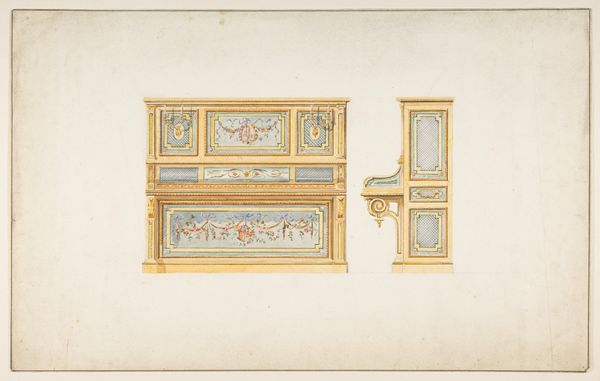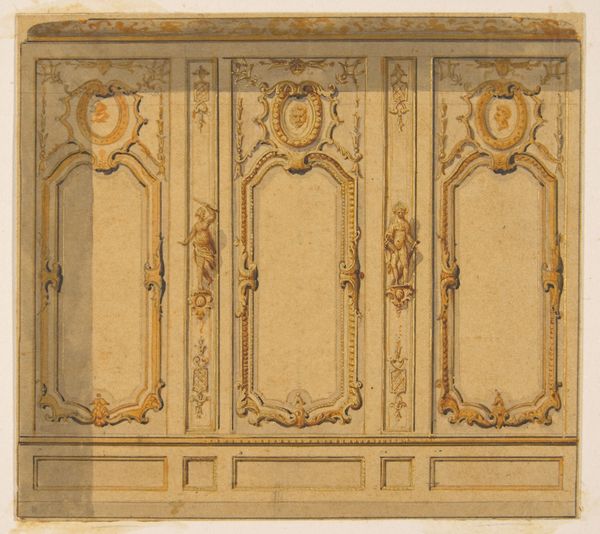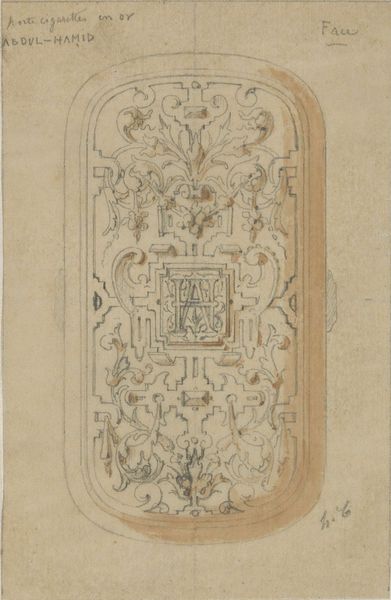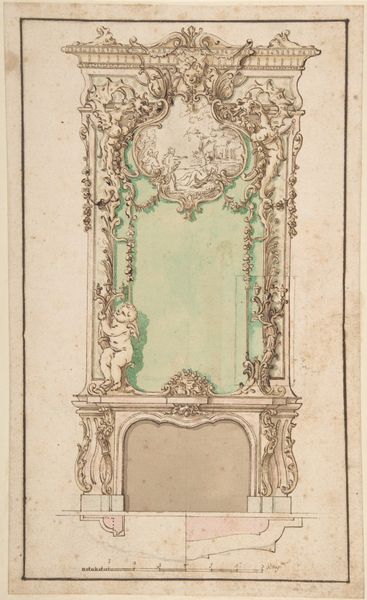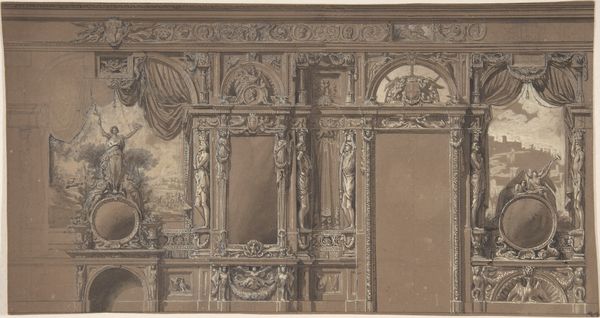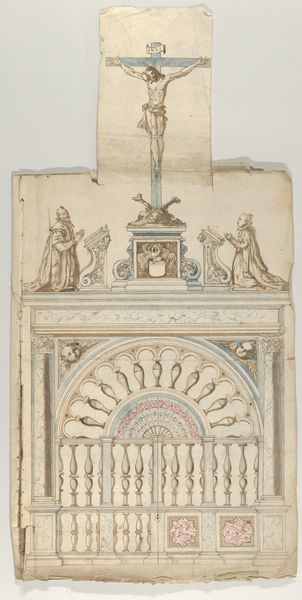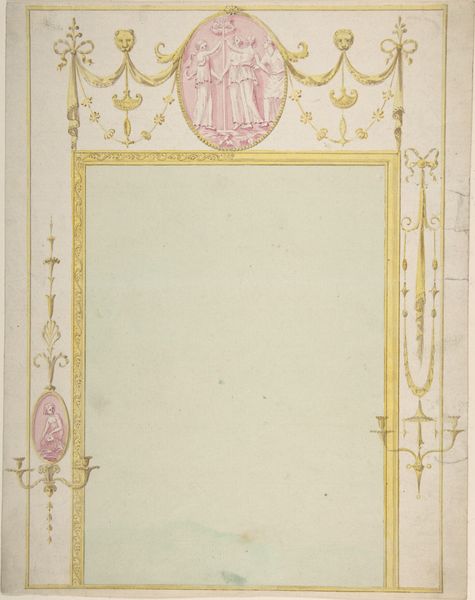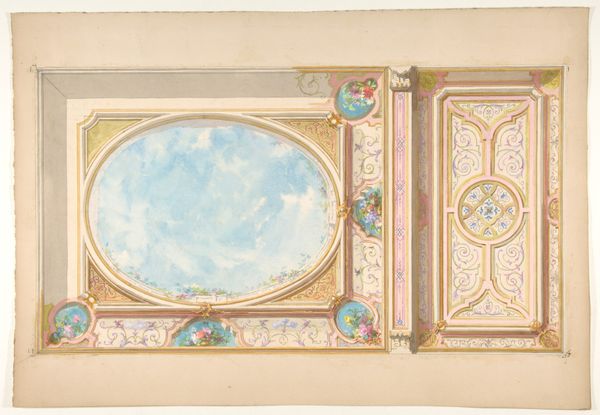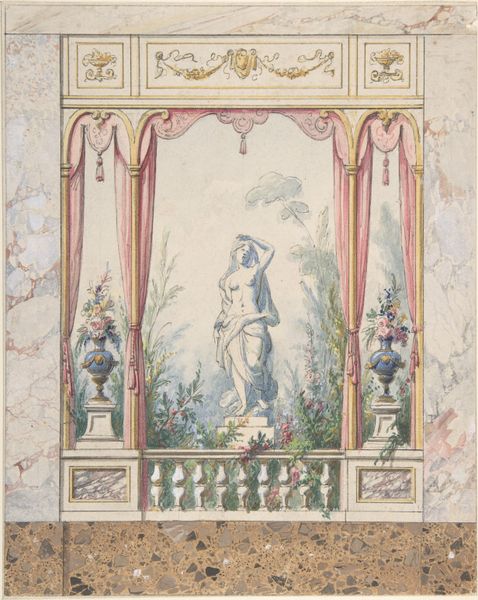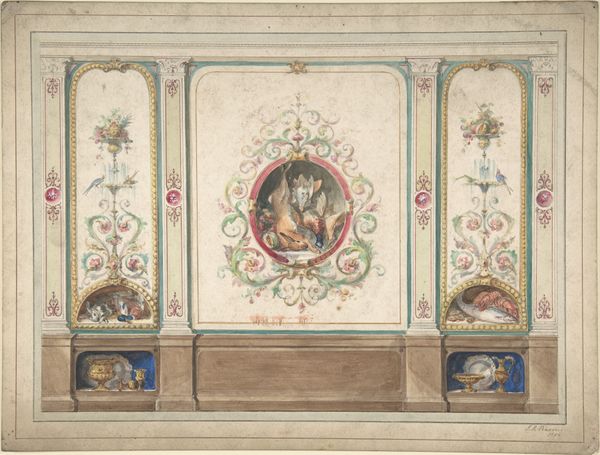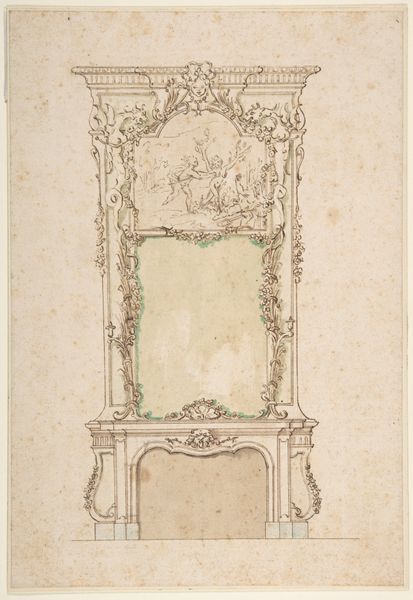
Elevation of an interior wall decorated with a chimney piece surmouted by a mirror and flanked with painted panels 1830 - 1897
0:00
0:00
drawing, painting, print, watercolor
#
drawing
#
neoclassicism
#
painting
# print
#
landscape
#
form
#
traditional architecture
#
watercolor
#
academic-art
#
decorative-art
#
watercolor
Copyright: Public Domain
Editor: Here we have Jules-Edmond-Charles Lachaise's "Elevation of an Interior Wall," a watercolor drawing and painting made sometime between 1830 and 1897. The scene shows a decorated wall with painted panels and a fireplace. It feels very formal and ornamented. What jumps out to you when you see this? Curator: I'm immediately drawn to the labor embedded in the details – the repetitive, almost manufactured look of the ornamentation around the panels and mirror. These designs speak to the burgeoning industrial processes that started influencing even "hand-crafted" luxury items during that period. How do you see the relationship between craft and industry playing out here? Editor: That's a good question, I hadn't thought of that. I guess the uniformity makes it feel less unique somehow, almost mass-produced. Does the choice of watercolor change how we view its creation and purpose? Curator: Absolutely. Watercolor, often associated with preliminary sketches or amateur art, is being used here to depict a very formal, high-status interior. The medium itself seems to be challenging the established hierarchies between "fine art" and decorative craft. Who was this intended for? Was this perhaps an exercise by an apprentice? Editor: Hmm, that's true! I can see the watercolor more as a proposal for a space. The material tells a lot more about the intent and its place in art history, it’s all much clearer now. Curator: Exactly. By examining the materials and intended context, we understand the blurring lines between art, design, labor, and consumption within that time. A new class of industrialists has emerged with wealth who were keen to show it. Editor: This really opened my eyes to considering art not just as a final piece, but within a broader industrial and social landscape. I see the medium so differently now!
Comments
No comments
Be the first to comment and join the conversation on the ultimate creative platform.
